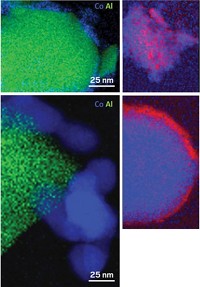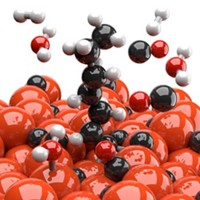Advertisement
Grab your lab coat. Let's get started
Welcome!
Welcome!
Create an account below to get 6 C&EN articles per month, receive newsletters and more - all free.
It seems this is your first time logging in online. Please enter the following information to continue.
As an ACS member you automatically get access to this site. All we need is few more details to create your reading experience.
Not you? Sign in with a different account.
Not you? Sign in with a different account.
ERROR 1
ERROR 1
ERROR 2
ERROR 2
ERROR 2
ERROR 2
ERROR 2
Password and Confirm password must match.
If you have an ACS member number, please enter it here so we can link this account to your membership. (optional)
ERROR 2
ACS values your privacy. By submitting your information, you are gaining access to C&EN and subscribing to our weekly newsletter. We use the information you provide to make your reading experience better, and we will never sell your data to third party members.
Materials
Catalyst Could Zap Methane Emissions
Catalysis: Agent oxidizes methane efficiently at low temperatures
by Stu Borman
August 13, 2012
| A version of this story appeared in
Volume 90, Issue 33

A new Oxidizing catalyst could lead to practical ways of scrubbing methane from motor vehicle exhaust. It could also lead to methods for obtaining more efficient combustion in, and reduced emissions from, industrial turbines fueled by natural gas, which is composed primarily of methane.
Methane is a potent greenhouse gas, an atmospheric substance that absorbs and emits radiation in a way that tends to warm Earth’s surface. Up to now, it has not been practical to reduce methane emissions in auto and truck exhaust because conventional methane-oxidation catalysts only begin to work at 400 °C, a typical exhaust temperature in vehicle tailpipes. In addition, existing catalysts tend to break down when exhaust temperatures get a lot hotter, such as when vehicles climb steep inclines or are driven very fast.
Now, a catalyst that oxidizes methane completely at 400 °C has been developed by catalysis and energy specialist Raymond J. Gorte of the University of Pennsylvania, catalyst expert Paolo Fornasiero of the University of Trieste, in Italy, and coworkers (Science, DOI: 10.1126/science.1222887). It hasn’t been fully tested under real-world conditions that might cause it to fail or work poorly, but it could lead to catalysts that would pass such tests.
The new catalyst consists of supramolecular structures distributed on an alumina support. The supramolecular structures have a “core-shell” design: A palladium oxide core is linked by metal-ion/ligand coordination to a protective shell of cerium oxide structures. The alumina support is specially treated with an organosilane to make it hydrophobic, enhancing its compatibility with the core-shell structures, which are also hydrophobic.
The catalyst accelerates methane oxidation more efficiently at lower temperatures than others tested. Some previous catalysts achieve complete methane conversion only at temperatures greater than 600 °C. And some degrade at temperatures above 600 °C, whereas the new catalyst remains intact at temperatures of up to 850 °C.
The researchers have not yet tested the catalyst’s ability to oxidize methane in a vehicle-exhaust medium containing catalyst-disabling components typically found there, such as sulfur compounds, oil-additive components, and steam.
Edman Tsang of Oxford University, an expert on catalysis and clean energy, says: “There is a tremendous need to remove small amounts of methane from the exhausts of gas turbines and internal combustion engines and from flue gases in petrochemical and related industries. The generally low activity of conventional catalysts and their instability at high temperatures” have made it difficult to meet this challenge, whereas the new catalyst makes a first step toward a solution. The approach needs further assessment but provides “a clear direction” for future research, he says.
Friedrich Esch of the Technical University of Munich, who specializes in catalytic surfaces and clusters, agrees that the catalyst’s strengths and weaknesses need to be further evaluated, but says that “it’s a very effective system for methane combustion, and it’s this kind of systematic catalyst preparation control that paves the way for the rational design of tailored catalysts.”
In future work, Gorte, Fornasiero, and coworkers hope to learn more about the catalyst’s mechanism of action, to make modified versions with improved methane-oxidizing capabilities, and to create similar catalysts for other reactions.





Join the conversation
Contact the reporter
Submit a Letter to the Editor for publication
Engage with us on Twitter